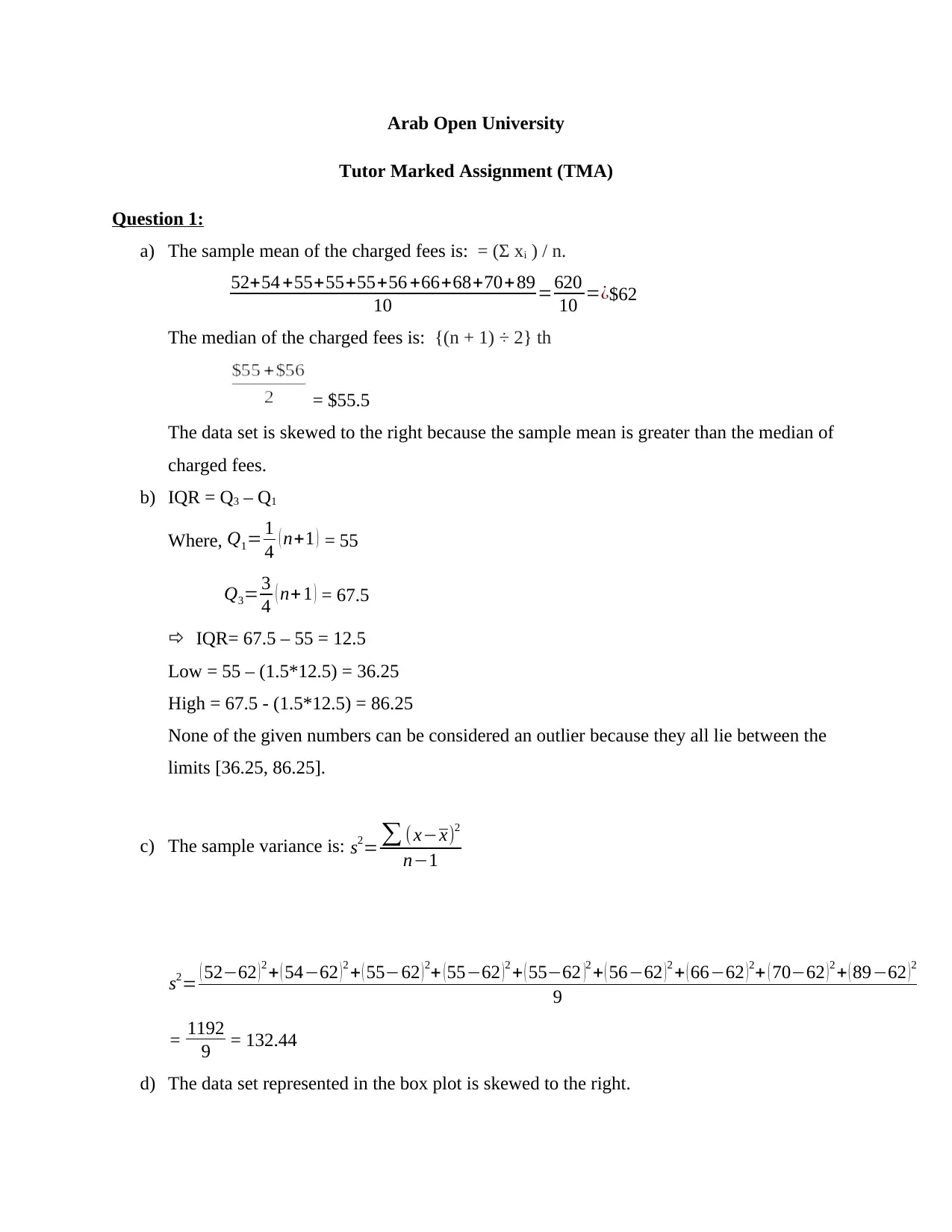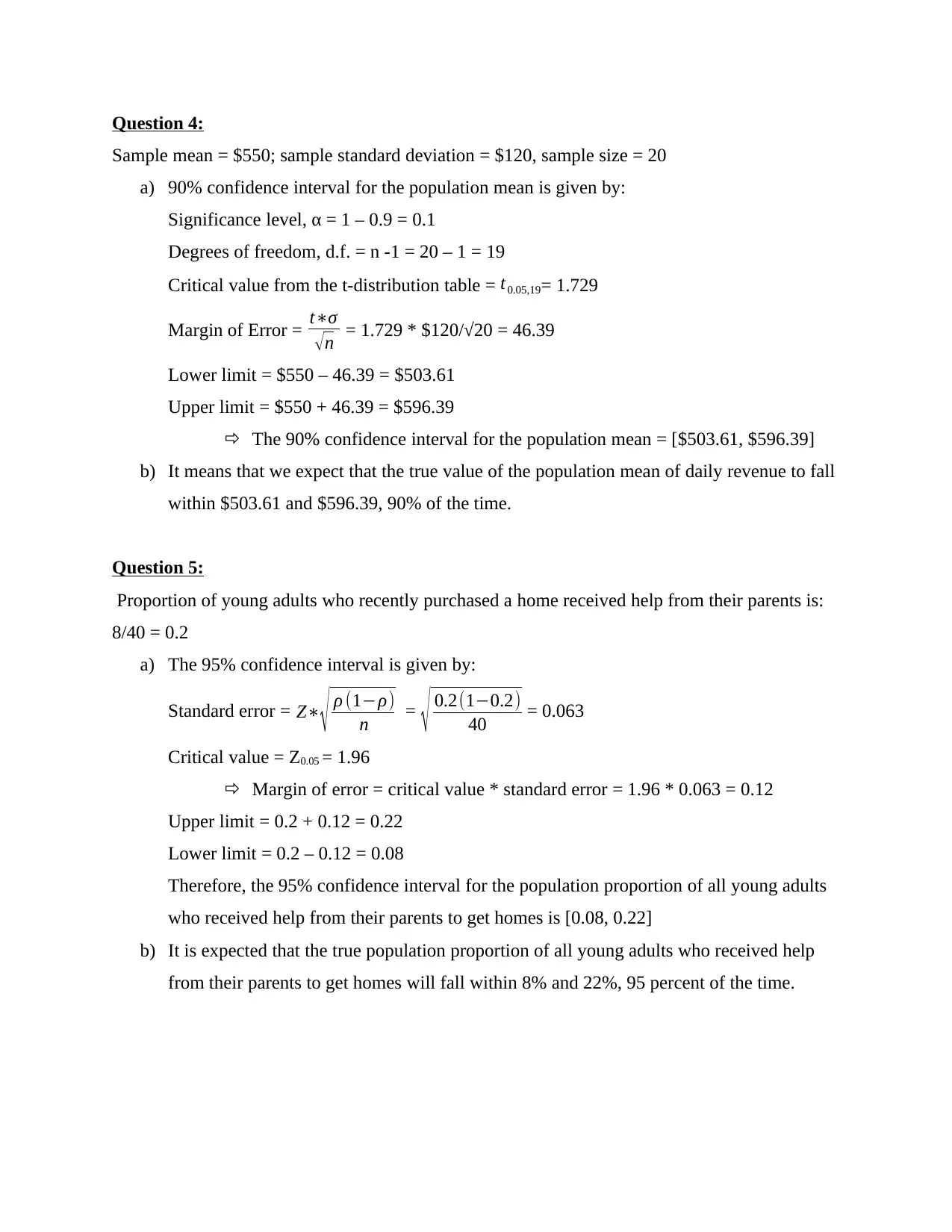Arab Open University M248 Analyzing Data TMA Solution - Fall 2018-2019
VerifiedAdded on 2023/05/31
|4
|903
|404
Homework Assignment
AI Summary
This document presents a complete solution to the M248 Analyzing Data Tutor Marked Assignment (TMA) from the Arab Open University, Fall 2018-2019 semester. The assignment covers a range of statistical concepts including calculating sample means and medians, identifying skewness, determining interquartile ranges (IQR) and outliers. It also includes calculating variance, expected values, standard deviations, and cumulative distribution functions. Further, the solution addresses probability calculations using the standard normal distribution, confidence interval estimation for population means and proportions, and interpreting these intervals. Finally, the solution includes the interpretation of results from a paired t-test, as obtained from an online tool.
1 out of 4











![[object Object]](/_next/static/media/star-bottom.7253800d.svg)